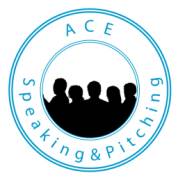A successful presentation goes beyond just delivering information; it’s about connecting with your audience and leaving a lasting impression. One of the most crucial aspects of effective presenting is tailoring your content to meet the specific needs and expectations of your audience. Whether you’re addressing colleagues, clients, students, or stakeholders, understanding and catering to their preferences can elevate your presentation from ordinary to extraordinary.
- Research Your Audience
Before you even start drafting your presentation, take the time to thoroughly research your audience. Understand their demographics, interests, knowledge level, and any common challenges they might face. This information forms the foundation for creating content that resonates.
- Define Your Objective
Clearly define the purpose of your presentation. Are you informing, persuading, inspiring, or educating? Once you have a clear objective, you can align your content and messaging accordingly. Knowing what you want to achieve will help you stay focused and on track throughout your presentation.
- Use Relevant Examples
Incorporating relatable examples that are pertinent to your audience’s experiences can significantly enhance their engagement. Analogies, case studies, and real-world scenarios help bridge the gap between abstract concepts and practical application, making your content more relatable and memorable.
- Speak Your Language
Avoid jargon or technical language that your audience might not understand. Tailor your vocabulary and tone to match the level of familiarity your audience has with the topic. Use terminology that they are comfortable with, while ensuring you don’t talk down to them.
- Address Your Concerns
Acknowledge potential concerns or questions your audience might have. If you can anticipate and address these issues within your presentation, you demonstrate that you understand their perspective and are genuinely interested in meeting their needs.
- Highlight Benefits
People are more likely to engage with content that directly benefits them. Clearly outline how your presentation will add value to their lives or work. Show how your ideas can solve problems, save time, increase efficiency, or open new opportunities.
- Customised Visuals
Visual aids play a crucial role in conveying information. Customize your visuals to align with your audience’s preferences and familiarity. If you’re presenting to a tech-savvy crowd, interactive graphics might be well-received, whereas a more traditional audience might prefer straightforward slides.
- Interactive Engagement
Engage your audience through interactive elements. Polls, quizzes, or open-ended questions can encourage participation and provide insights into their thoughts and opinions. This engagement not only keeps them attentive but also tailors the content to their interests.
- Storytelling Connection
Humans are wired for stories. We remember narratives far better than facts alone. Weave relatable stories into your presentation that illustrate your points and make an emotional connection. Stories can help your audience see the practical application of your ideas.
- Flexibility and Adaptation
Even with meticulous planning, be prepared to adjust your presentation on the spot. If you sense that the audience’s interests or needs have shifted, be ready to pivot and address those changes. Your ability to adapt in real-time showcases your responsiveness and dedication to catering to their needs.
Tailoring your presentation to your audience’s specific needs is an art that requires research, empathy, and adaptability. When you put in the effort to understand your audience and adjust your content accordingly, you create a presentation that resonates deeply and has a lasting impact. By speaking your language, addressing your concerns, and connecting through relatable examples, you’ll not only inform but also inspire and engage your audience.

